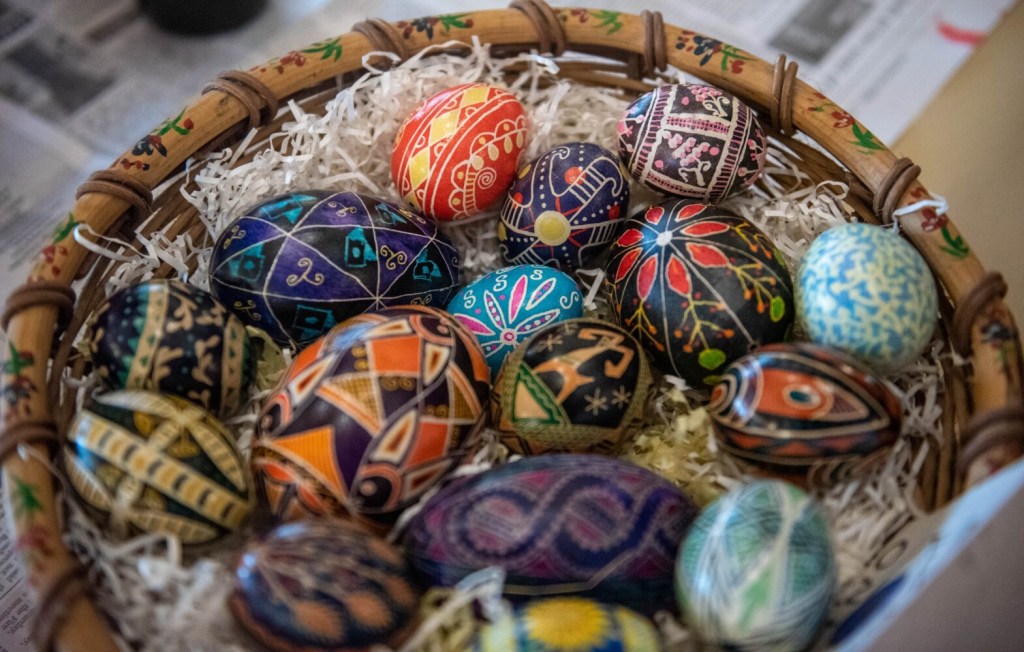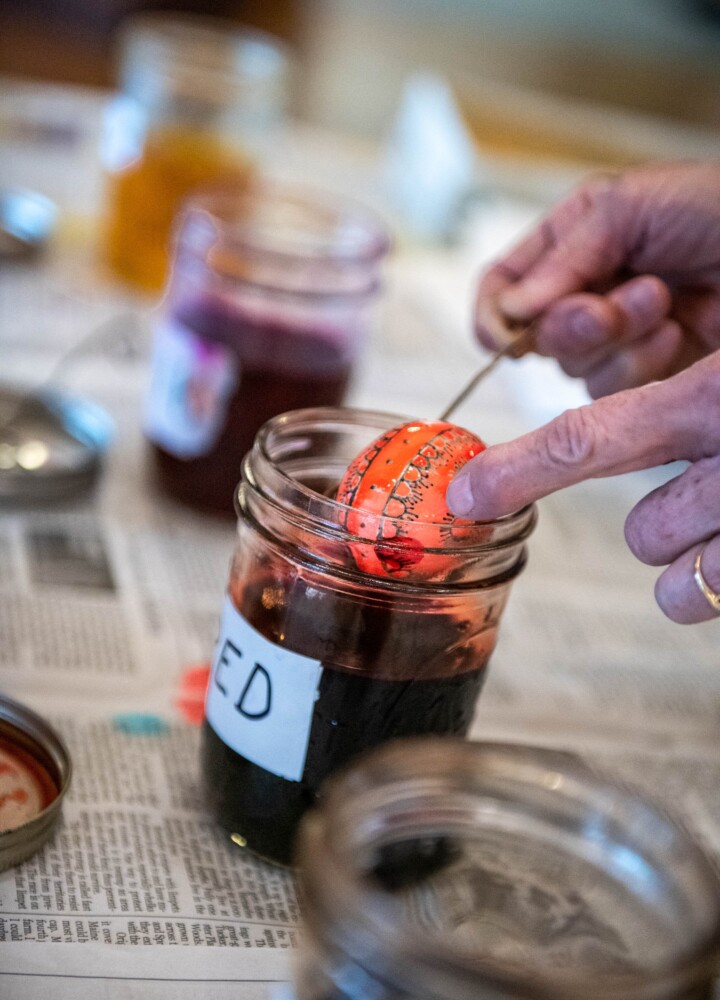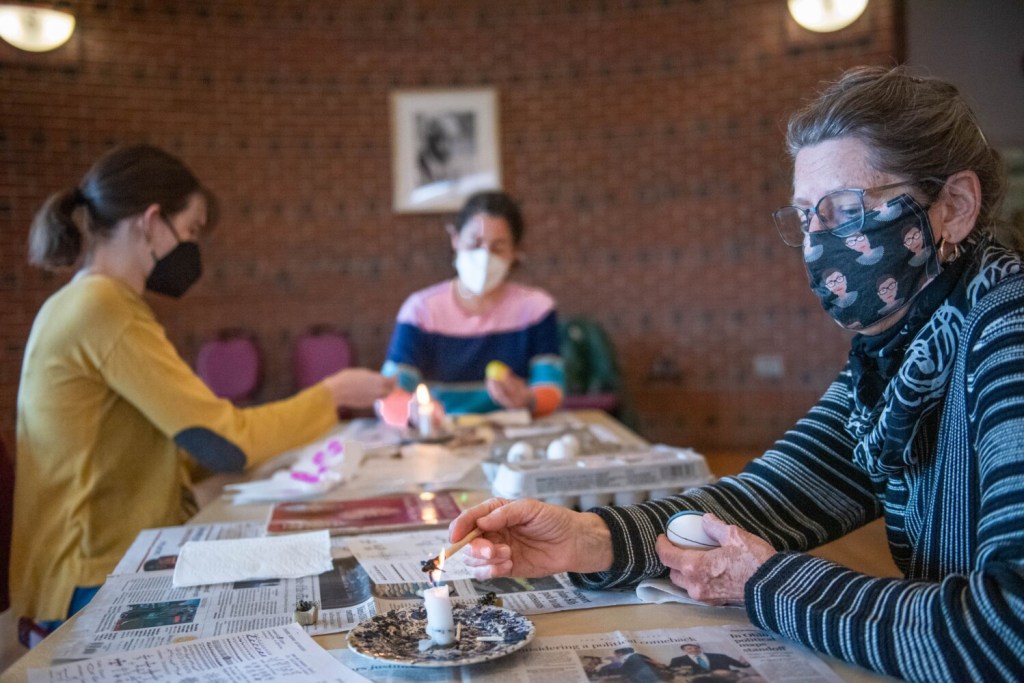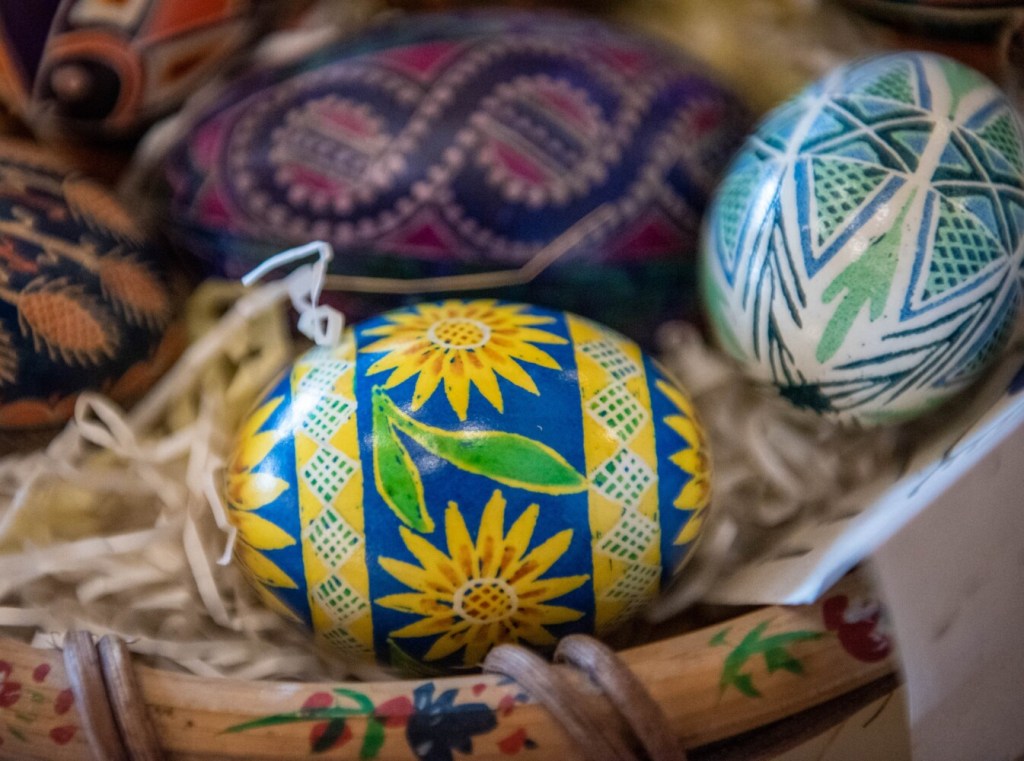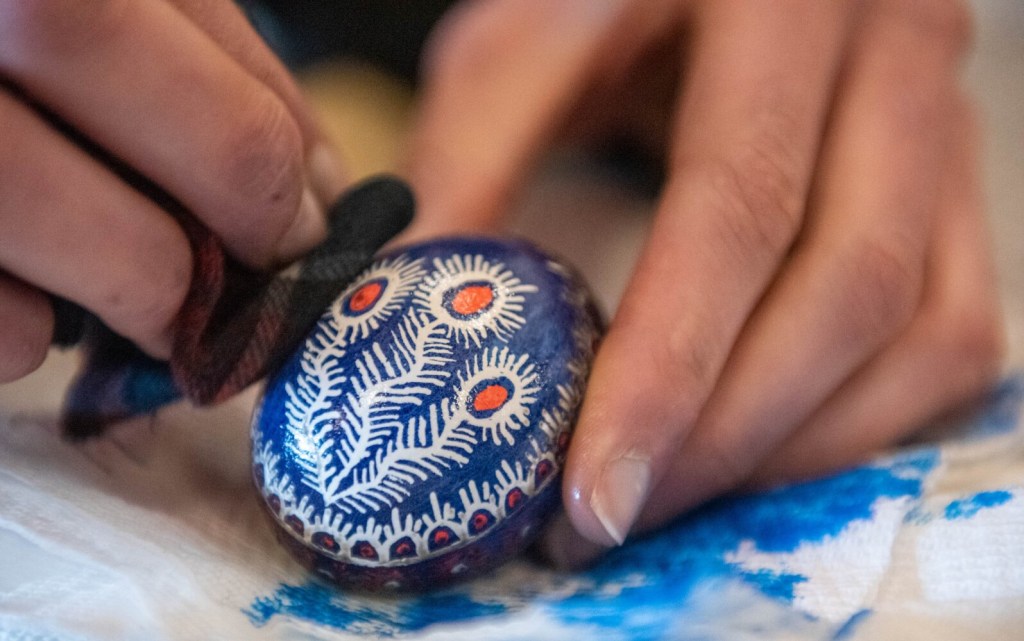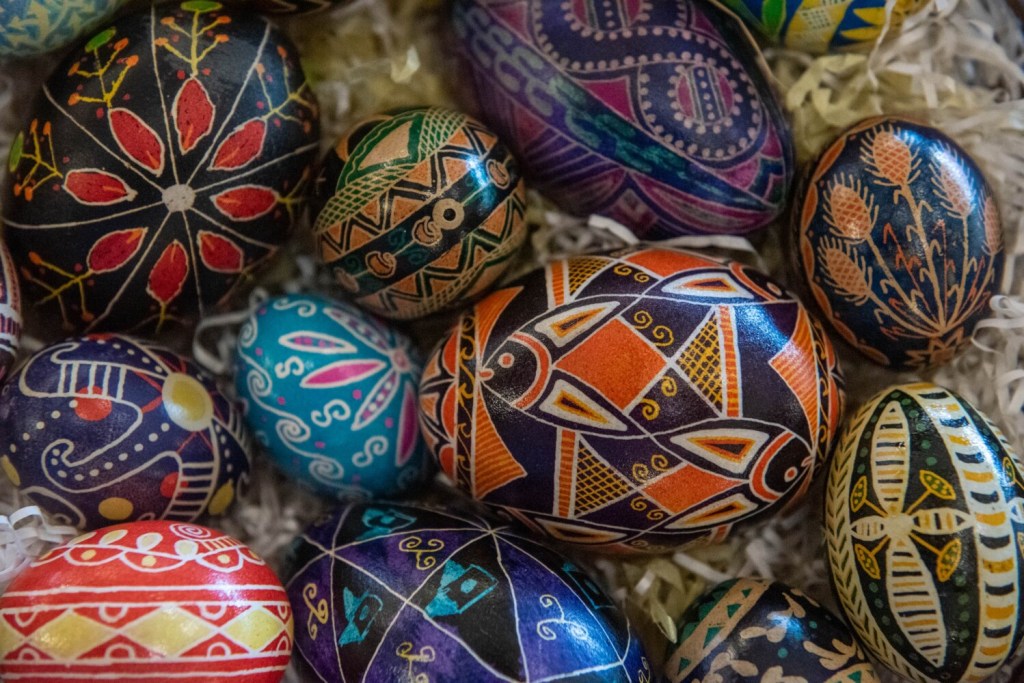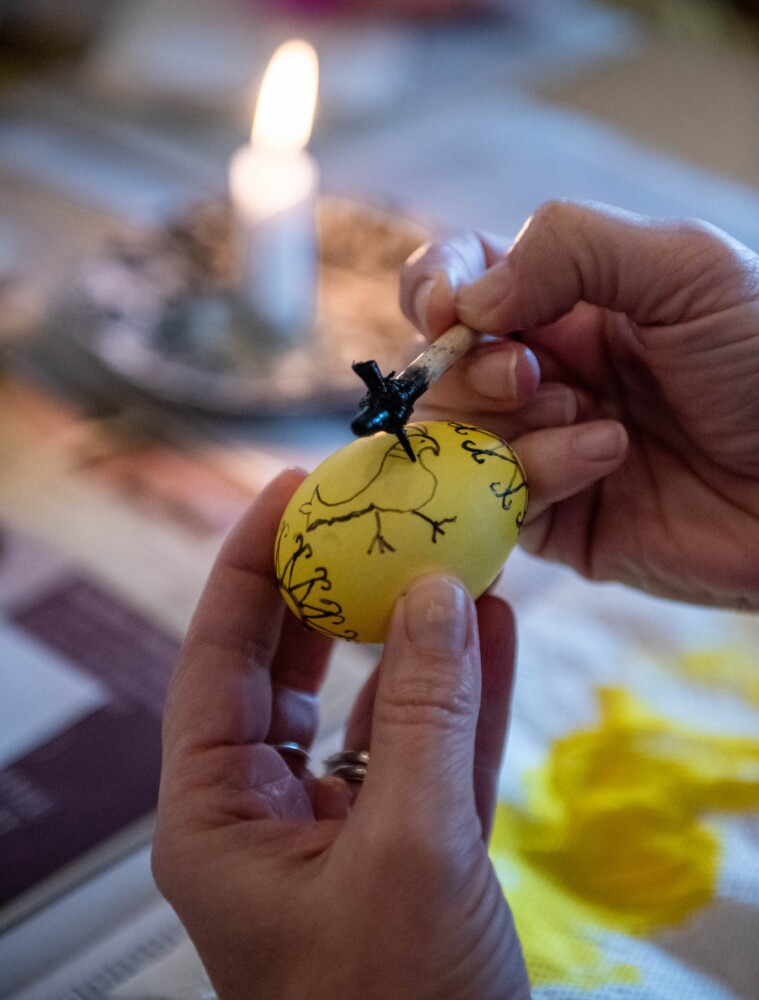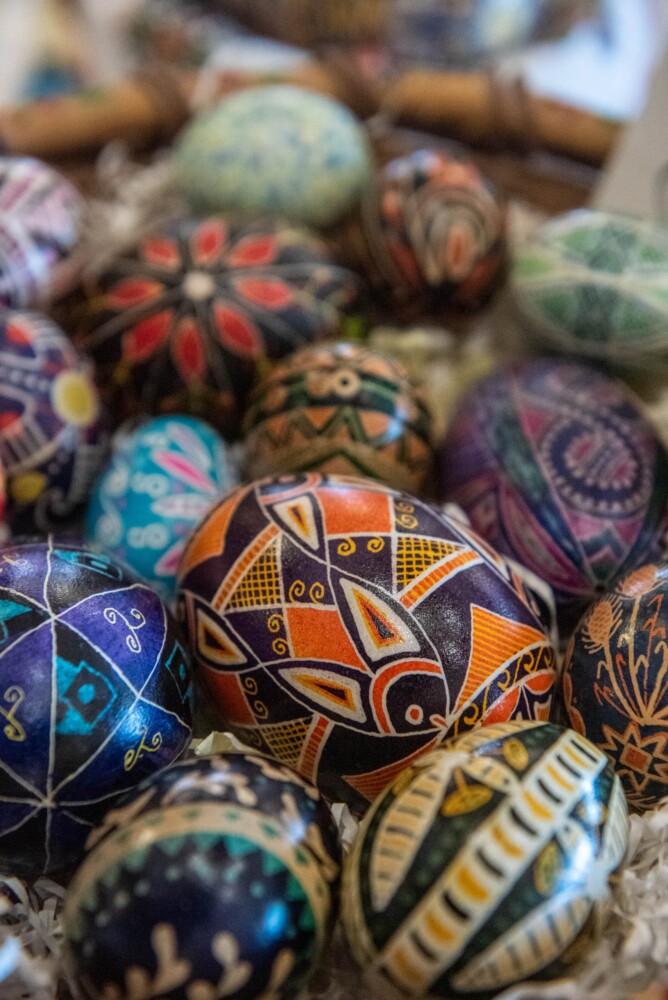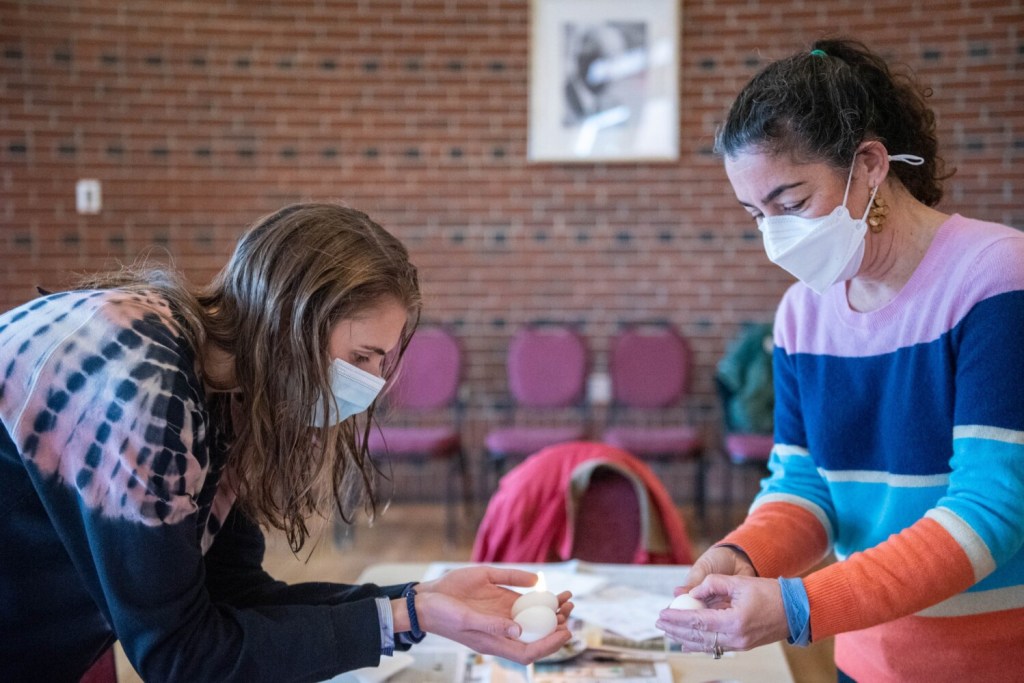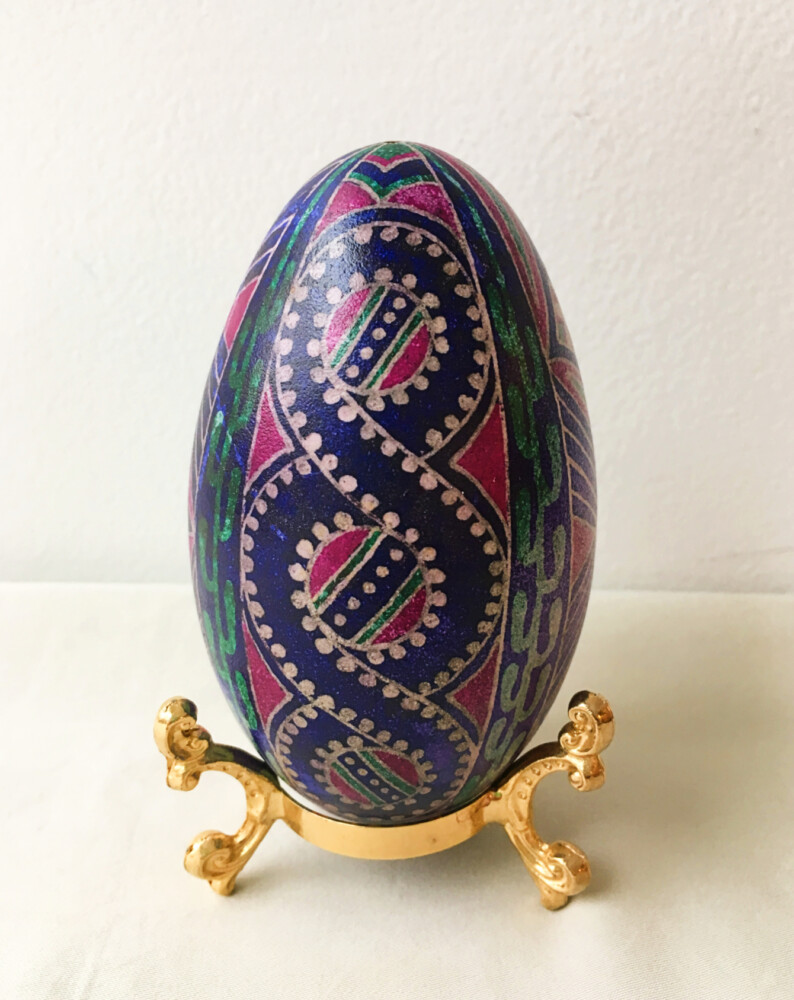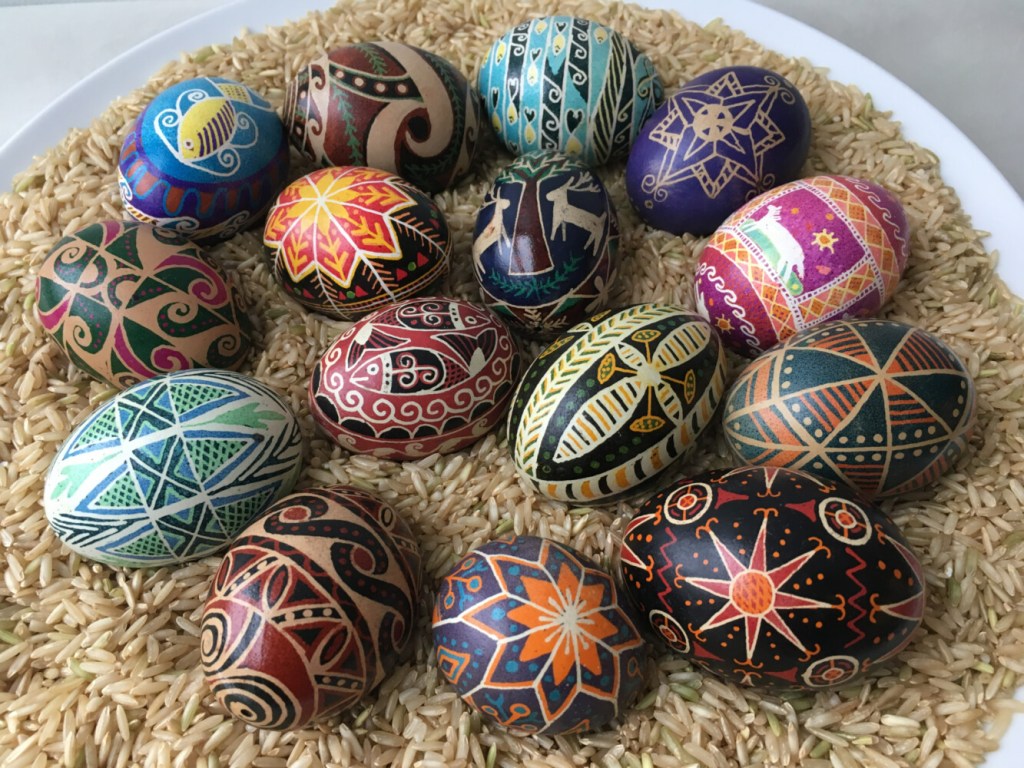LEWISTON — The tradition of decorating Ukrainian pysanky eggs at Bates College is a relatively recent one, but for Lesia Sochor, who runs the workshop almost every spring, its significance is deeply rooted in culture and her love of art.
A pysanky (pronounced pee-sank-uh) is a traditional Ukrainian Easter egg decorated with folk designs using beeswax, differing from Christian Easter eggs that are decorated with watercolor paint. Though most commonly associated with Ukraine, variations can be seen throughout Eastern Europe in Belarus, Croatia, Hungary and Poland.
According to Sochor, the word “pysanky” is derived from the Ukrainian verb meaning “to write,” and the eggs are decorated using a kystka — a wooden tool with a funnel-shaped metal tip that is dipped in a succession of dyes to apply the colored hot wax.
There is no specific kind of egg needed: They can range in color and size from robin to ostrich eggs.
Sochor said the pysanky is considered to be a talisman that ensures good health, protection, fertility and abundance, and is revered as a holy object.
“The egg itself is really magical in its symbolism,” she said. “They’re not just appreciated for their beauty but for their belief system and what they mean to the culture.”
Born to first-generation Ukrainian immigrants in Philadelphia, Sochor learned the art of the pysanky tradition from her mother.
“They kept the tradition very much alive,” she said. “It’s a spring tradition that was carried on in our family every (year), because the egg is the symbol for the rebirth of the Earth. It is a hugely important and revered art form in Ukraine, and Ukrainian decorated eggs are known the world over. It’s an identity of culture.”
Having taught her now-grown children, Sochor looks forward to teaching on a wider scale through her workshops and exposing others who may not have heard of the pysanky, though teaching it was not her original intent.
“I just started this whole thing with my family and then one thing led to another and then it just organically grew and evolved to different people wanting me to teach it,” she said.
She has taught the tradition across Maine and returned Friday to the Benjamin Mays Center at the Bates Museum of Art for the fifth time after a two-year break due to the pandemic.
A painter by trade with a background in private and public education, Sochor came to Maine from Woodstock, New York, in 1980, living with a cousin. After she met her husband, they settled in Belfast.
She has since held residencies through the Maine Arts Commission and museum workshops throughout the state. Her work is featured at The Museum of Russian Icons in Clinton, Massachusetts, where her series “PYSANKA: Symbol of Renewal,” is on display through July 24 as a show of solidarity with Ukraine during the Russian invasion.
Sochor has been in contact with family members in Lviv and said perhaps the only silver lining to come out of the conflict is reconnecting with family whom she has not spoken with for almost 20 years. During that reconnecting, she learned that one of her relatives is coincidentally named Lesia Sochor.
“I think that making eggs this year is so poignant, and I think that so many people want to do all things Ukrainian to feel like they’re helping in any way they can,” she said. “I share some of the history and I share some of the culture, and I’m so proud to be Ukrainian and to be able to do that and to give people an insight into this beautiful tradition and beautiful eggs that they can walk away with (feeling) that they’ve somehow in some very tiny, tiny way contributed their energy to Ukraine and the Ukrainian people, and it’s horrifying what’s happening.”
Each of the two workshops at Bates College were limited to 10 participants and 10 guests, but Sochor hopes to continue the annual tradition at the college in the future.
Send questions/comments to the editors.
